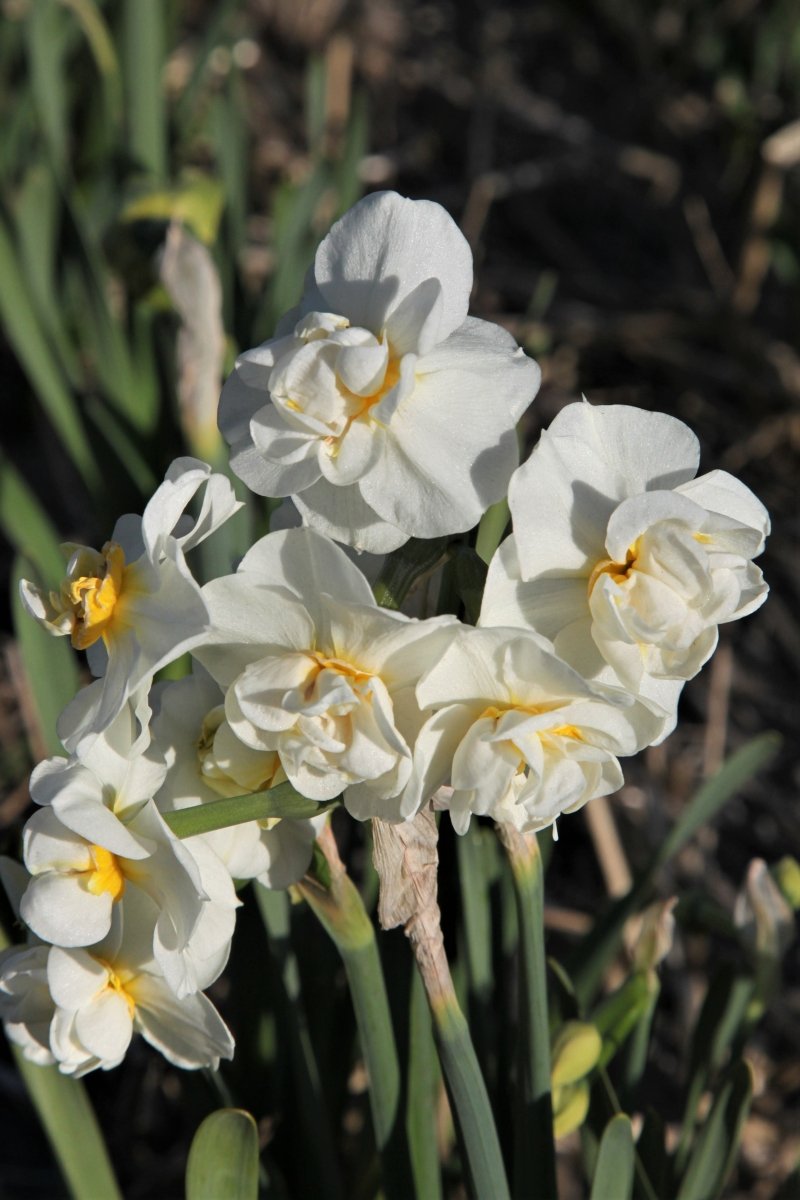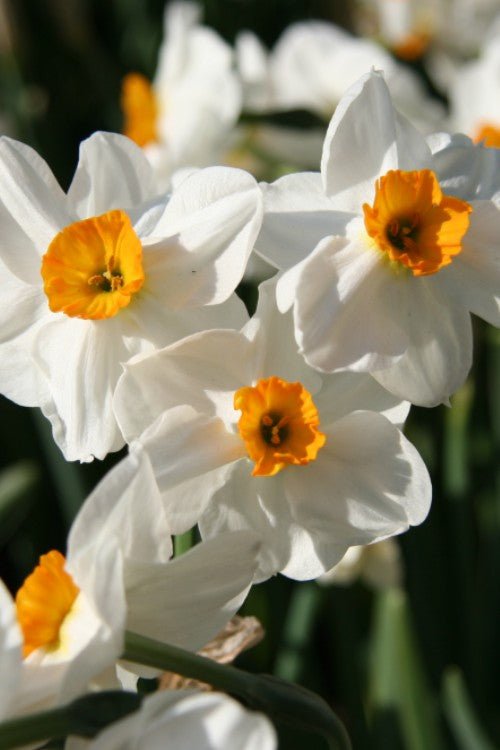Sort by:
About Cheerfulness
Experience the vibrant beauty of Daffodil Cheerfulness in your garden! These delightful white with orange crown flowers will brighten up any space with their sunny disposition and enchanting fragrance. With their captivating charm, Daffodil Cheerfulness is perfect for adding a touch of joy to your outdoor landscape.
- Gorgeous blooms that exude cheerfulness and radiate positive energy
- Aromatic fragrance that creates an inviting atmosphere
- Hardy and resilient, thriving in various climates
- Long-lasting flowers that return year after year
- Easy to grow and maintain, suitable for both beginners and experienced gardeners
How to plant and take care of Cheerfulness
- Choose a well-drained location with partial to full sunlight
- Dig a hole approximately twice the depth of the bulb
- Place the bulb in the hole with the pointed side up
- Cover the bulb with soil and gently press it down
- Water thoroughly after planting and keep the soil evenly moist
- Ensure proper drainage to prevent waterlogging
- Apply a balanced fertilizer during the growing season
- Remove spent flowers to encourage more blooms
- Allow foliage to die back naturally before cutting it back
- Protect from extreme temperatures or excessive moisture
About Geranium
This stunning Daffodil Geranium will add a burst of color to any garden or outdoor space. With its eye-catching petals and lush foliage, it's sure to impress both avid gardeners and beginners alike.
- Striking and vibrant white with orange blooms
- Beautifully contrasting colors that catch the eye
- Lush foliage for added visual appeal
- Thrives in both sunny and partially shaded areas
- Easy to grow and low maintenance
How to plant and take care of Geranium
- Choose a well-draining soil for optimal growth
- Plant in a location that receives morning sun and afternoon shade
- Dig a hole slightly larger than the plant's root ball and place it in the hole
- Backfill with soil and gently firm it around the plant
- Water thoroughly after planting and keep the soil moist but not waterlogged
- Deadhead spent flowers regularly to encourage continuous blooming
- Apply a balanced fertilizer during the growing season to promote healthy growth
- Protect from frost in colder climates by covering or moving indoors
About Pheasant's Eye
What can we say about Daffodil Pheasant's Eye? Just that it is a stunning addition to any garden. With its delicate white petals and striking yellow center, this flower is sure to captivate all who behold it.
- Beautiful white petals with a vibrant yellow center
- Adds an elegant touch to any garden or floral arrangement
- Long-lasting blooms that return year after year
- Ideal for borders, containers, or naturalizing in grassy areas
- Hardy and easy to grow, perfect for beginners and experienced gardeners alike
How to plant and take care of Pheasant's Eye
- Choose a sunny or partially shaded location with well-draining soil
- Dig a hole that is 2-3 times the depth of the bulb
- Place the bulb in the hole with the pointed end facing upwards
- Cover with soil and gently firm it around the bulb
- Water thoroughly after planting and keep the soil moist but not waterlogged
- Provide regular watering during the growing season, especially during dry spells
- Fertilize with a balanced bulb fertilizer in early spring and after flowering
- After the flowers fade, allow the foliage to wither naturally before cutting it back
- Divide clumps every few years to maintain vigor and prevent overcrowding
About Sir Winston Churchill
Experience the regal beauty of Daffodil Sir Winston Churchill, a stunning addition to your garden. With its elegant white petals and large, fragrant blooms, this daffodil variety is sure to captivate both you and your guests. Whether planted in borders, containers, or naturalized in meadows, Sir Winston Churchill will add a touch of elegance and charm to any landscape.
- Stunning white petals
- Large and fragrant blooms
- Adds elegance and charm to gardens
- Suitable for borders, containers, and meadows
How to plant and take care of Sir Winston Churchill
- Choose a well-drained location with partial to full sunlight
- Dig a hole that is two times the depth of the bulb
- Place the bulb in the hole with the pointed side facing up
- Cover with soil and gently firm it down
- Water thoroughly after planting and keep the soil evenly moist
- Fertilize in early spring and after flowering with a balanced bulb fertilizer
- Remove spent flowers to promote better growth and prevent seed formation
- Allow the foliage to die back naturally before cutting it back
About Yellow Cheerfulness
Transform your garden into a sea of yellow happiness with Daffodil Yellow Cheerfulness! This delightful flower will add a touch of sunshine to any space. With its cheerful yellow blooms and graceful appearance, it's the perfect addition to your outdoor oasis.
- Vibrant yellow blooms that bring joy and brightness
- Graceful and elegant appearance
- Long-lasting flowers that bloom in early spring
- Perfect for borders, containers, or naturalizing your garden
- Low-maintenance and easy to grow
How to plant and take care of Yellow Cheerfulness
- Plant bulbs in the fall, 4-6 inches deep and 4-6 inches apart
- Choose a well-drained location with full or partial sunlight
- Water regularly during the growing season, but avoid overwatering
- Deadhead spent flowers to promote continuous blooming
- Allow foliage to die back naturally before cutting it down
- Apply a balanced fertilizer in early spring to encourage healthy growth
- Protect from extreme cold temperatures with a layer of mulch
FAQs






